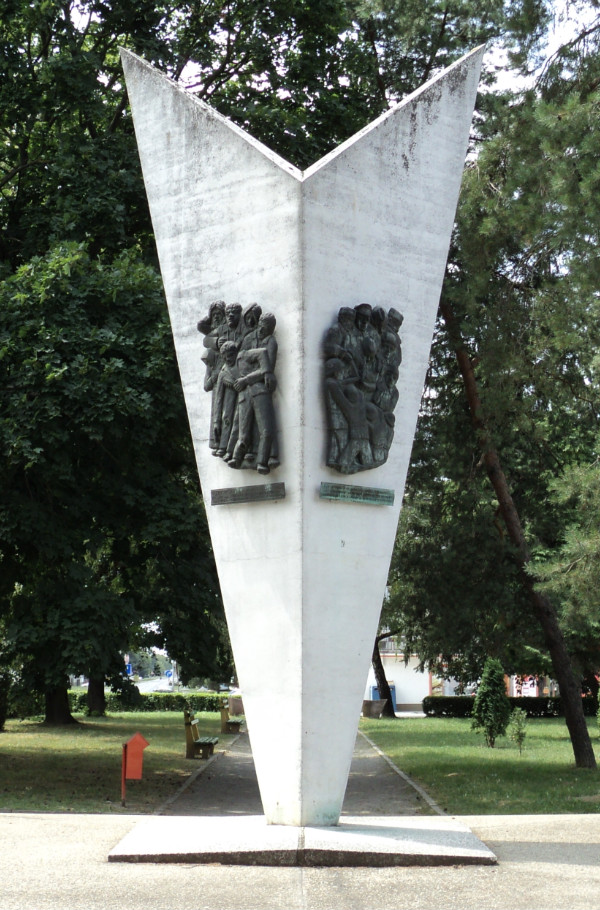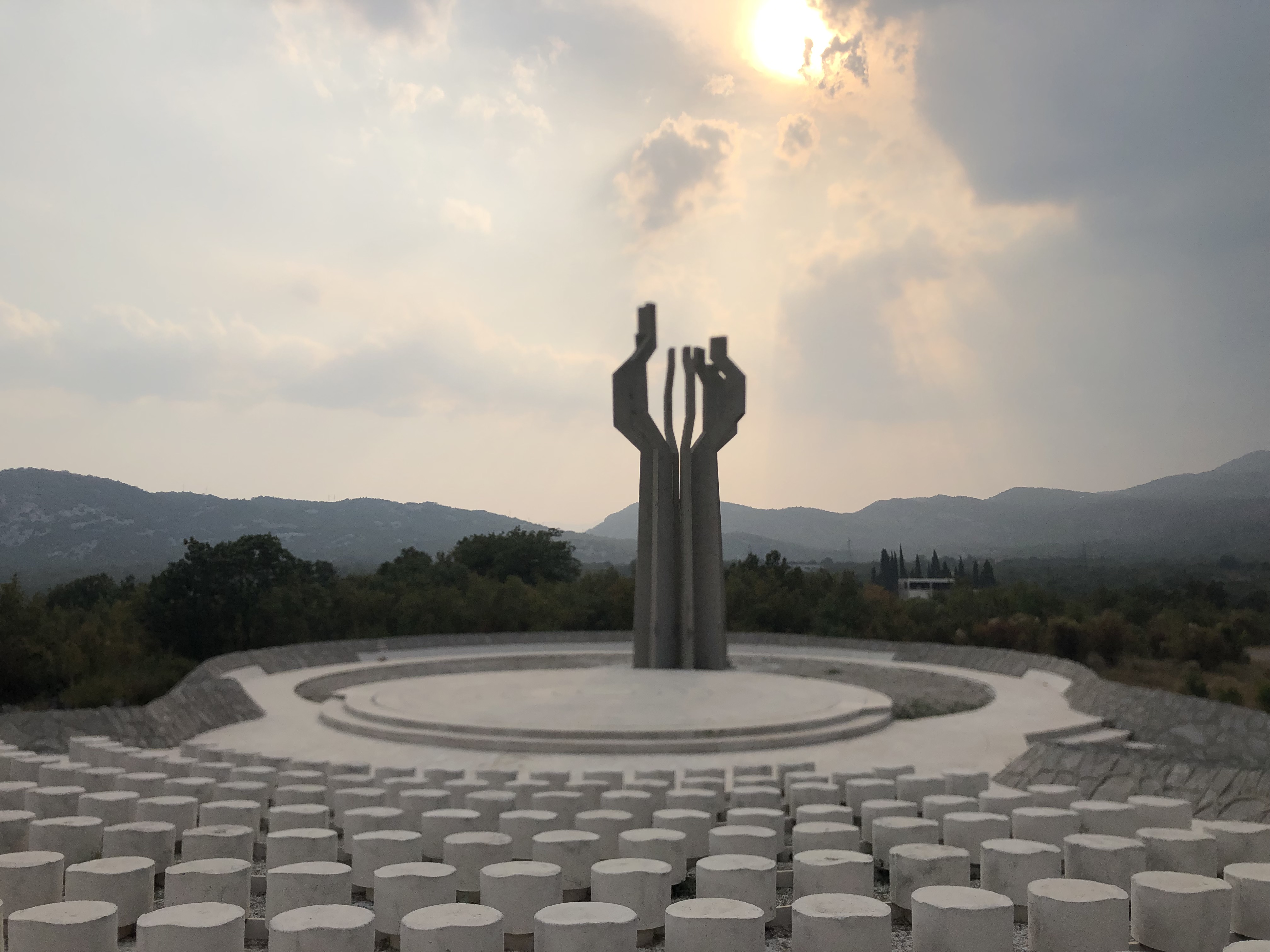|
Donji Miholjac
Donji Miholjac ( hu, Alsómiholjác, german: Unter-Miholtz) is a town in the Slavonia region of Croatia, on the river Drava and the border with Hungary. Population In the 2011 census, there were 9,491 inhabitants in the area, 95% of whom were Croats. Settlements There are seven settlements in the municipality: * Donji Miholjac, population 6,240 * Golinci, population 431 * Miholjački Poreč, population 183 * Podgajci Podravski, population 651 * Radikovci, population 292 * Rakitovica, population 868 * Sveti Đurađ, population 826 History In the late 19th and early 20th century, Donji Miholjac was a district capital in the Virovitica County of the Kingdom of Croatia-Slavonia The Kingdom of Croatia-Slavonia ( hr, Kraljevina Hrvatska i Slavonija; hu, Horvát-Szlavónország or ; de-AT, Königreich Kroatien und Slawonien) was a nominally autonomous kingdom and constitutionally defined separate political nation with .... Its name comes from Saint Michael. During the ... [...More Info...] [...Related Items...] OR: [Wikipedia] [Google] [Baidu] |
Cities Of Croatia
An urbanized area in Croatia can gain the status of ''grad'' (which can be translated as town or city as there is no distinction between the two terms in Croatian) if it meets one of the following requirements: # is the center of a county (''županija''), or # has more than 10,000 residents, or # is defined by an exception (where the necessary historical, economic or geographic reasons exist) A city (town) represents an urban, historical, natural, economic and social whole. The suburbs comprising an economic and social whole with the city, connected with it by daily migration movements and daily needs of the population of local significance, may also be included into the composition of a city as unit of local self-government. ''Grad'' (city/town) is the local administrative equivalent of '' općina'' (translated as "municipality"), with the only distinction being that the former usually comprise urban areas whereas the latter commonly consist of a group of villages. Note that bot ... [...More Info...] [...Related Items...] OR: [Wikipedia] [Google] [Baidu] |
Radikovci
Radikovci is a village in Croatia, located in the region of Slavonia, Osijek-Baranja County Osijek-Baranja County (, hr, Osječko-baranjska županija, hu, Eszék-Baranya megye) is a county in Croatia, located in northeastern Slavonia and Baranja. Its center is Osijek. Other towns include Đakovo, Našice, Valpovo, Belišće, and .... References Populated places in Osijek-Baranja County {{OsijekBaranja-geo-stub ... [...More Info...] [...Related Items...] OR: [Wikipedia] [Google] [Baidu] |
Cities And Towns In Croatia
A city is a human settlement of notable size.Goodall, B. (1987) ''The Penguin Dictionary of Human Geography''. London: Penguin.Kuper, A. and Kuper, J., eds (1996) ''The Social Science Encyclopedia''. 2nd edition. London: Routledge. It can be defined as a permanent and densely settled place with administratively defined boundaries whose members work primarily on non-agricultural tasks. Cities generally have extensive systems for housing, transportation, sanitation, utilities, land use, production of goods, and communication. Their density facilitates interaction between people, government organisations and businesses, sometimes benefiting different parties in the process, such as improving efficiency of goods and service distribution. Historically, city-dwellers have been a small proportion of humanity overall, but following two centuries of unprecedented and rapid urbanization, more than half of the world population now lives in cities, which has had profound consequences for g ... [...More Info...] [...Related Items...] OR: [Wikipedia] [Google] [Baidu] |
Ancient Rome
In modern historiography, ancient Rome refers to Roman civilisation from the founding of the city of Rome in the 8th century BC to the collapse of the Western Roman Empire in the 5th century AD. It encompasses the Roman Kingdom (753–509 BC), Roman Republic (509–27 BC) and Roman Empire (27 BC–476 AD) until the fall of the western empire. Ancient Rome began as an Italic settlement, traditionally dated to 753 BC, beside the River Tiber in the Italian Peninsula. The settlement grew into the city and polity of Rome, and came to control its neighbours through a combination of treaties and military strength. It eventually dominated the Italian Peninsula, assimilated the Greek culture of southern Italy (Magna Grecia) and the Etruscan culture and acquired an Empire that took in much of Europe and the lands and peoples surrounding the Mediterranean Sea. It was among the largest empires in the ancient world, with an estimated 50 to 90 million inhabitants, roughly ... [...More Info...] [...Related Items...] OR: [Wikipedia] [Google] [Baidu] |
Saint Michael
Michael (; he, מִיכָאֵל, lit=Who is like El od, translit=Mīḵāʾēl; el, Μιχαήλ, translit=Mikhaḗl; la, Michahel; ar, ميخائيل ، مِيكَالَ ، ميكائيل, translit=Mīkāʾīl, Mīkāl, Mīkhāʾīl), also called Saint Michael the Archangel, Saint Michael the Taxiarch in Orthodoxy and Archangel Michael is an archangel in Judaism, Christianity, Islam and the Baha'i faith. The earliest surviving mentions of his name are in 3rd- and 2nd-century BC Jewish works, often but not always apocalyptic, where he is the chief of the angels and archangels and responsible for the care of Israel. Christianity adopted nearly all the Jewish traditions concerning him, and he is mentioned explicitly in Revelation 12:7–12, where he does battle with Satan, and in the Epistle of Jude, where the author denounces heretics by contrasting them with Michael. Second Temple Jewish writings The earliest surviving mention of Michael is in a 3rd century BC Jew ... [...More Info...] [...Related Items...] OR: [Wikipedia] [Google] [Baidu] |
Kingdom Of Croatia-Slavonia
The Kingdom of Croatia-Slavonia ( hr, Kraljevina Hrvatska i Slavonija; hu, Horvát-Szlavónország or ; de-AT, Königreich Kroatien und Slawonien) was a nominally autonomous kingdom and constitutionally defined separate political nation within the Austro-Hungarian Empire. It was created in 1868 by merging the kingdoms of Croatia and Slavonia following the Croatian–Hungarian Settlement of 1868. It was associated with the Kingdom of Hungary within the dual Austro-Hungarian state, being within the Lands of the Crown of St. Stephen, also known as '' Transleithania''. While Croatia had been granted a wide internal autonomy with "national features", in reality, Croatian control over key issues such as tax and military issues was minimal and hampered by Hungary. It was internally officially referred to as the Triune Kingdom of Croatia, Slavonia and Dalmatia, also simply known as the Triune Kingdom, and had claims on Dalmatia, which was administrated separately by the Austrian ... [...More Info...] [...Related Items...] OR: [Wikipedia] [Google] [Baidu] |
Virovitica County
Virovitica County ( hr, Virovitička županija; hu, Verőce vármegye) was a historic administrative subdivision (''županija'') of the Kingdom of Croatia-Slavonia. Croatia-Slavonia was an autonomous kingdom within the Lands of the Crown of Saint Stephen (Transleithania), the Hungarian part of the dual Austro-Hungarian Empire. Its territory is now in eastern Croatia. The name of the county comes from the town of Virovitica (in Hungarian: ''Verőce''). The capital of the county moved from Virovitica to Osijek (Croatian, in Hungarian: ''Eszék'') in the late 18th century. Geography Virovitica County shared borders with the Hungarian counties of Somogy, Baranya, Bács-Bodrog, and the Croatian-Slavonian counties of Srijem, Požega and Bjelovar-Križevci. The county stretched along the right (southern) bank of the river Drava, down to its confluence with the river Danube. Its area was 4867 km² around 1910. History The territory of Virovitica County was part of the King ... [...More Info...] [...Related Items...] OR: [Wikipedia] [Google] [Baidu] |
Spomenik Slobodi Donji Miholjac
The authorities of the Socialist Federal Republic of Yugoslavia established many World War II memorials during its existence. Several memorial sites were established between 1945 and 1960, though widespread building started after the founding of the Non-Aligned Movement. Yugoslav president Josip Broz Tito commissioned several memorial sites and monuments in the 1960s and 1970s dedicated to World War II battles, and Nazi concentration camp sites. They were designed by notable sculptors, including Dušan Džamonja, Vojin Bakić, Miodrag Živković, Jordan and Iskra Grabul, and architects, including Bogdan Bogdanović and Gradimir Medaković. After Tito's death, a small number were built, and the monuments were popular visitor attractions in the 1980s as patriotic sites, and since the Yugoslav Wars and the dissolution of Yugoslavia, the sites are mostly abandoned. In Slovenia, World War II Veteran Organisation and its branches yearly hold many commemorative events in regard with t ... [...More Info...] [...Related Items...] OR: [Wikipedia] [Google] [Baidu] |
Sveti Đurađ, Osijek-Baranja County
Sveti Đurađ is a village in Croatia , image_flag = Flag of Croatia.svg , image_coat = Coat of arms of Croatia.svg , anthem = "Lijepa naša domovino"("Our Beautiful Homeland") , image_map = , map_caption = , capit .... It is connected by the D34 highway. Populated places in Osijek-Baranja County {{OsijekBaranja-geo-stub ... [...More Info...] [...Related Items...] OR: [Wikipedia] [Google] [Baidu] |
Rakitovica
Rakitovica is a village in Croatia , image_flag = Flag of Croatia.svg , image_coat = Coat of arms of Croatia.svg , anthem = "Lijepa naša domovino"("Our Beautiful Homeland") , image_map = , map_caption = , capit .... References Populated places in Osijek-Baranja County {{OsijekBaranja-geo-stub ... [...More Info...] [...Related Items...] OR: [Wikipedia] [Google] [Baidu] |
Podgajci Podravski
Podgajci Podravski is a village in Croatia , image_flag = Flag of Croatia.svg , image_coat = Coat of arms of Croatia.svg , anthem = "Lijepa naša domovino"("Our Beautiful Homeland") , image_map = , map_caption = , capit .... It is connected by the D34 highway. References Populated places in Osijek-Baranja County {{OsijekBaranja-geo-stub ... [...More Info...] [...Related Items...] OR: [Wikipedia] [Google] [Baidu] |
List Of Sovereign States
The following is a list providing an overview of sovereign states around the world with information on their status and recognition of their sovereignty. The 206 listed states can be divided into three categories based on membership within the United Nations System: 193 member states of the United Nations, UN member states, 2 United Nations General Assembly observers#Present non-member observers, UN General Assembly non-member observer states, and 11 other states. The ''sovereignty dispute'' column indicates states having undisputed sovereignty (188 states, of which there are 187 UN member states and 1 UN General Assembly non-member observer state), states having disputed sovereignty (16 states, of which there are 6 UN member states, 1 UN General Assembly non-member observer state, and 9 de facto states), and states having a political status of the Cook Islands and Niue, special political status (2 states, both in associated state, free association with New Zealand). Compi ... [...More Info...] [...Related Items...] OR: [Wikipedia] [Google] [Baidu] |

.jpg)






